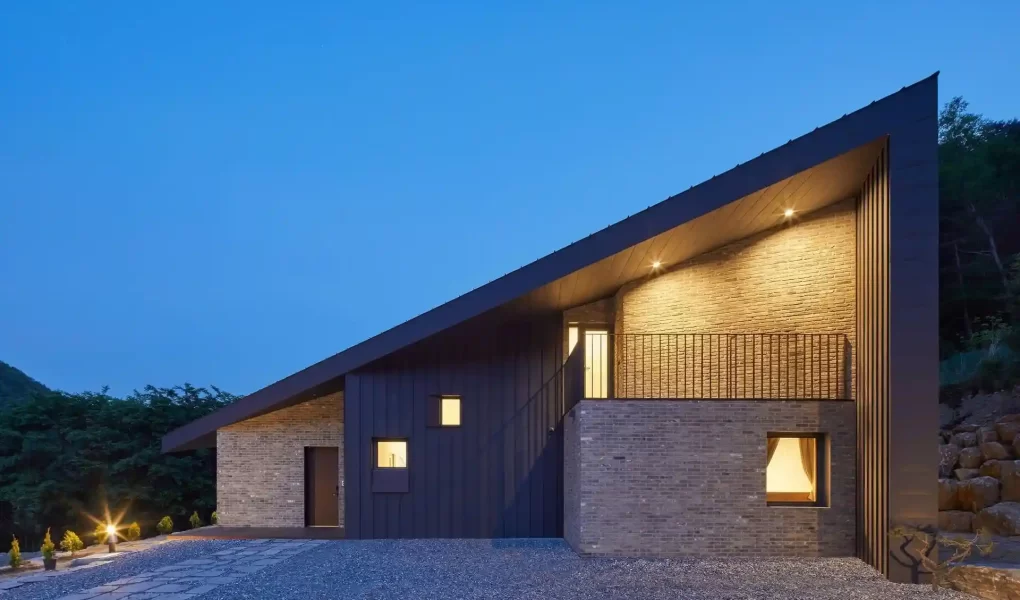A pitched roof is one of the most common types of roofing structures found in residential and commercial buildings worldwide. Characterized by its sloping design, a pitched roof offers numerous benefits that contribute to its widespread popularity. In this article, we will explore the various advantages of a pitched roof, examining how its design enhances durability, aesthetics, energy efficiency, and more.
1. Improved Water Drainage

Efficient Water Runoff
One of the primary benefits of a pitched roof is its ability to efficiently shed water. The sloping design ensures that rainwater and snow quickly run off the roof, reducing the risk of water pooling and potential leaks.
- Reduced Risk of Leaks: By facilitating quick water runoff, pitched roofs minimize the chances of water seeping into the building, which can cause significant damage over time.
- Protection Against Snow Accumulation: In colder climates, pitched roofs are particularly advantageous as they prevent the accumulation of snow, which can add excessive weight and lead to structural damage.
Minimized Maintenance
The effective water drainage system of pitched roofs also means that they require less maintenance compared to flat roofs. With fewer chances of water pooling, there is a reduced need for frequent repairs and maintenance.
2. Enhanced Durability and Longevity
Robust Structural Design
Pitched roofs are known for their durability and long lifespan. The sloping design distributes weight more evenly across the structure, reducing the stress on the roof and enhancing its overall stability.
- Resistance to Weather Elements: Pitched roofs are better equipped to withstand harsh weather conditions, including heavy rain, strong winds, and snowfall.
- Longevity: The materials used for pitched roofs, such as asphalt shingles, metal, and tiles, are highly durable and can last for several decades with proper maintenance.
Improved Air Circulation
The angled design of pitched roofs allows for better air circulation, which helps in maintaining the integrity of the roofing materials and prevents issues like mold and mildew growth.
3. Energy Efficiency
Natural Ventilation
Pitched roofs provide natural ventilation through the attic space, helping to regulate indoor temperatures and reduce the need for artificial heating and cooling.
- Energy Savings: Improved ventilation can lead to significant energy savings by reducing the reliance on HVAC systems.
- Comfortable Indoor Environment: Better air circulation ensures a more comfortable living environment by maintaining optimal indoor temperatures throughout the year.
Insulation Opportunities
The space created by a pitched roof can be used to add extra insulation, enhancing the building’s energy efficiency. Proper insulation helps keep the building warm in the winter and cool in the summer, further reducing energy costs.
4. Aesthetic Appeal
Architectural Versatility
Pitched roofs come in various styles and designs, allowing for greater architectural versatility and enhancing the visual appeal of a building.
- Customization Options: Homeowners can choose from different types of pitched roofs, such as gable, hip, and mansard roofs, to match their aesthetic preferences.
- Curb Appeal: The distinctive look of a pitched roof adds character and charm to a building, increasing its curb appeal and potentially its market value.
Blend with Natural Surroundings
Pitched roofs can be designed to blend seamlessly with the natural surroundings, creating a harmonious and visually pleasing environment.
5. Additional Living Space
Attic and Loft Spaces
One of the significant advantages of a pitched roof is the creation of additional living space in the form of attics or lofts. These areas can be utilized for various purposes, such as storage, additional bedrooms, or home offices.
- Increased Usable Space: The extra space provided by a pitched roof can significantly enhance the functionality and usability of a home.
- Potential for Conversion: Attics and lofts can be converted into fully functional living areas, adding value to the property and providing extra room for growing families.
6. Enhanced Property Value
Investment Value
Properties with pitched roofs tend to have higher market value due to their durability, aesthetic appeal, and additional living space. Investing in a pitched roof can yield long-term financial benefits.
- Higher Resale Value: Homes with pitched roofs are often more attractive to buyers, leading to a higher resale value.
- Desirability: The combination of practical benefits and visual appeal makes pitched roofs a desirable feature in the real estate market.
Low Maintenance Costs
The durability and efficient water drainage of pitched roofs result in lower maintenance costs over time. This aspect further contributes to the overall value of the property.
7. Environmental Benefits
Sustainable Materials
Many pitched roofs are made from sustainable materials that have a lower environmental impact compared to traditional roofing materials.
- Recyclable Materials: Materials such as metal and certain types of tiles can be recycled, reducing waste and promoting sustainability.
- Energy Efficiency: The energy-efficient nature of pitched roofs also contributes to a smaller carbon footprint by reducing the need for artificial heating and cooling.
Solar Panel Installation
The sloping design of pitched roofs is ideal for installing solar panels, allowing homeowners to harness solar energy and reduce their reliance on non-renewable energy sources.
- Renewable Energy: Solar panels can provide a significant portion of a home’s energy needs, promoting the use of renewable energy and reducing utility bills.
- Environmental Impact: Utilizing solar energy helps decrease the overall environmental impact of a home, contributing to a more sustainable future.




